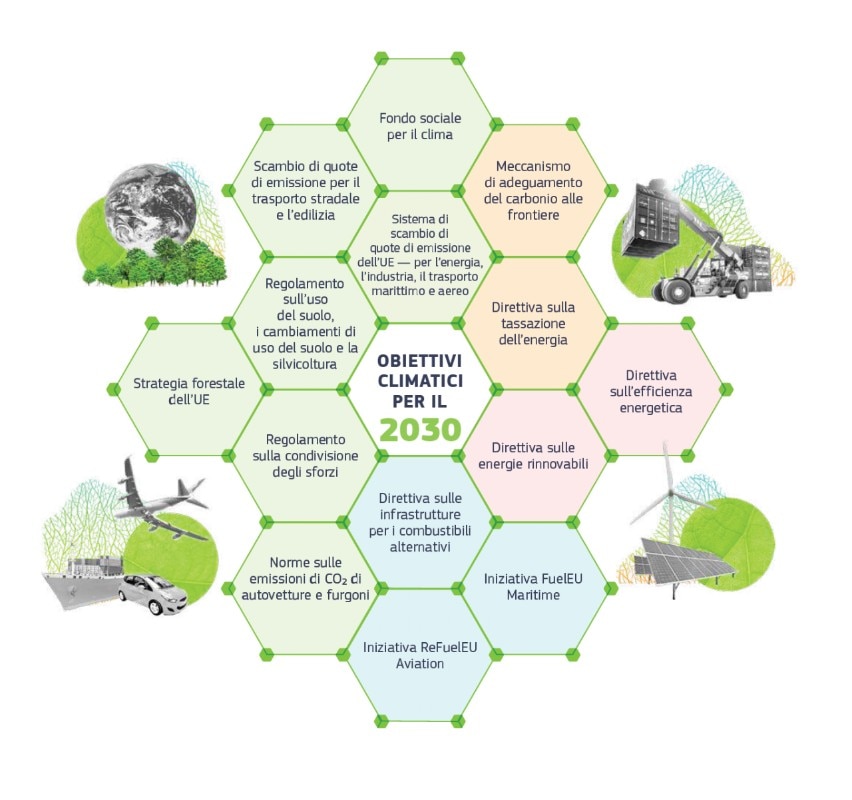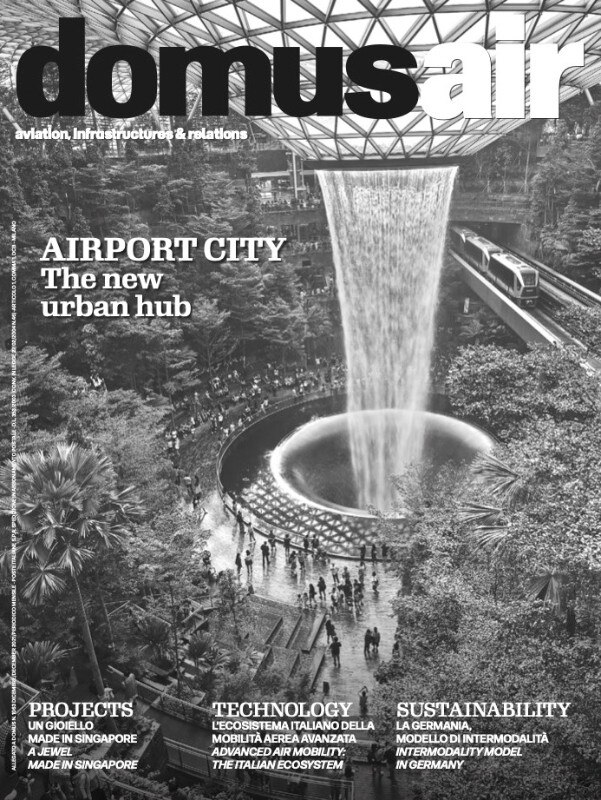This article was originally published on DomusAir n.3, dicembre 2021.
According to European Commission President Ursula von der Leyen, it will be “like the first lunar landing”. Achieving climate neutrality in Europe by 2050 is the “epochal step” that the EU set forth as an objective last 14 July by drafting and approving the packet of initiatives in the European Green Deal. The first step envisages a 55% reduction in EU greenhouse gas emissions by 2030, compared to 1990 levels. The EGD entails investments of one trillion euros in different areas over the next decade. A major slice goes to investments in mobility: a Sustainable and Smart Mobility Strategy and Action Plan has been drafted with the objective of reducing the environmental impact of the transportation sector (public and private, from cars to airplanes). It has strong political and economic value in recognizing that continental interconnectivity is a fundamental element of the union. As the Commission writes in the strategy document: “The COVID-19 pandemic has clearly demonstrated that safeguarding the well-functioning single market is vital for the EU.
The crisis has shown the essential role played by transport and the social, health and economic costs when free movement of people, goods and services is severely constrained or even curtailed altogether. The preservation of supply chains and a coordinated European approach to connectivity and transport activity are essential to overcome any crisis and strengthen the EU’s strategic autonomy and resilience. Therefore, ensuring that our transport system is truly resilient against future crises must also be a key objective of the EU’s transport policy going forward. Completing the Single European Transport Area as envisioned by the 2011 White Paper still remains a cornerstone of European transport policy. Fostering cohesion, reducing regional disparities as well as improving connectivity and access to the internal market for all regions, remains of strategic importance for the EU. The COVID-19 pandemic had a significant impact on mobility. In the context of the recovery from this severe crisis, public support should help mobility ‘build back better’ and leap forward to a sustainable and smarter future.”

A very ambitious intention underlies this significant commitment. The document states the goal of making the EU the “world’s connectivity hub” and continues: “The sustainable European transport system that the EU strives for must be smart, flexible, and adaptable to ever-changing transport patterns and needs, based on cutting-edge technological advancements to provide seamless, safe and secure connectivity to all European citizens. Transport should showcase European ingenuity and industriousness — standing at the vanguard of research, innovation and entrepreneurship, and driving the twin transitions [green and digital].” The objective? “People should enjoy a seamless multimodal experience throughout their journey, through a set of sustainable mobility choices, increasingly driven by digitalisation and automation. As innovation will shape the mobility of passengers and freight of the future, the right framework and enablers should be in place to facilitate this transition that can make the transport system much more efficient and sustainable.”
From here to 2030 and 2050, the Green Deal envisages European mobility based on an efficient, interconnected multimodal transportation system, both for passengers and freight, complemented by a high-speed rail system with affordable ticket prices, widespread recharging and refuelling infrastructure for zero-emission vehicles, renewable, low-carbon-emission fuels, and cleaner, more active mobility in greener cities that benefit the health and wellbeing of citizens. The document continues: “The COVID-19 pandemic has demonstrated how increased multimodality is also crucial to improving the resilience of our transport system and how ready the public is to embrace sustainable alternative modes of travel.
Public support should help mobility leap forward to a sustainable and smarter future
People are willing to switch to more sustainable modes of transport, in particular in their daily mobility, with the main condition for switching being the cost, availability and speed. The EU must help create appropriate conditions for the higher uptake of sustainable alternatives that are safe, competitive and affordable. Where suitable alternatives are in place at competitive prices, frequencies and comfort levels, people choose the more sustainable mode.”
Flagship no. 2 in the document identifies specific guiding principles for seaport and airport connections. The Commission emphasizes that “Ports and airports are key for our international connectivity, for the European economy, and for their regions. In their transition to zero-emission nodes, the best practices followed by the most sustainable airports and ports must become the new normal and enable more sustainable forms of connectivity. Ports and airports should become multimodal mobility and transport hubs, linking all the relevant modes. This will improve air quality locally thereby contributing to improved health of nearby residents.” The Commission pledges to enact measures to clean up seaports and airports; provide incentives for renewable, low-carbon-emission fuels based on renewable, non-fossil sources to power ships and airplanes using the infrastructure; favour the development and use of cleaner and quieter latest generation airplanes and ships; rework airport fees and make airport ground transportation and seaport services and operations more environmentally friendly; optimize harbours; and make wider use of smart traffic management.
Finally, the document states: “Public and private investment in local renewable energy production, in more sustainable multimodal access and in fleet renewals in aviation and waterborne transport must increase. Some of these investments would benefit from the establishment of relevant sustainable taxonomy criteria that covers the specificities of each mode, including during transition to zero emissions. The revised lending policy to be decided by the European Investment Bank (EIB) can equally be expected to be helpful.”



